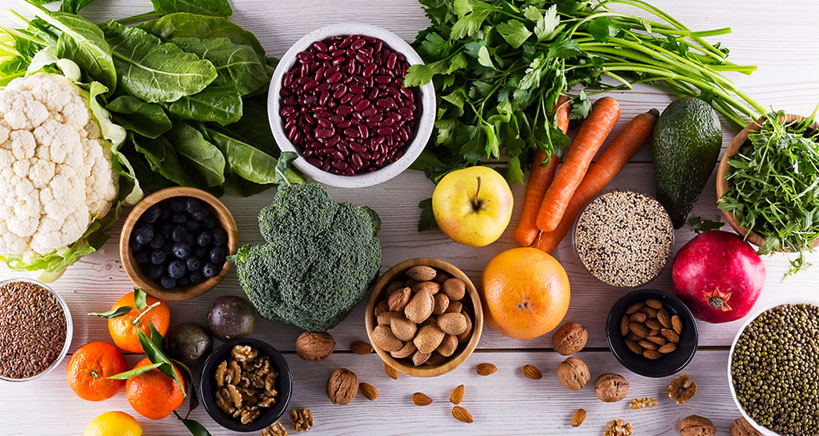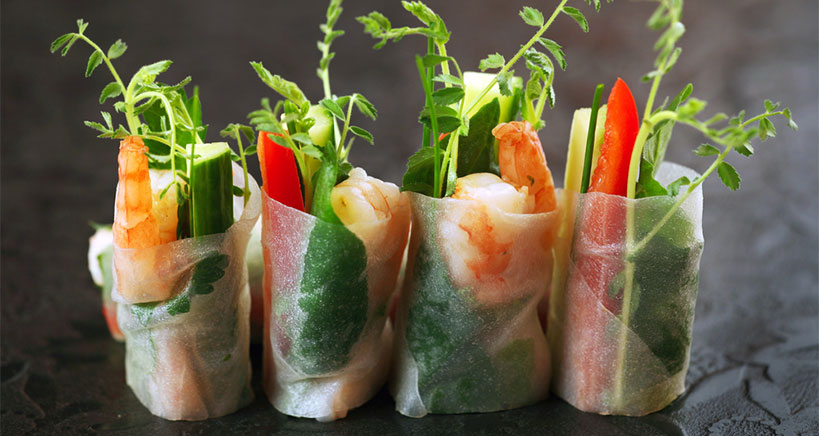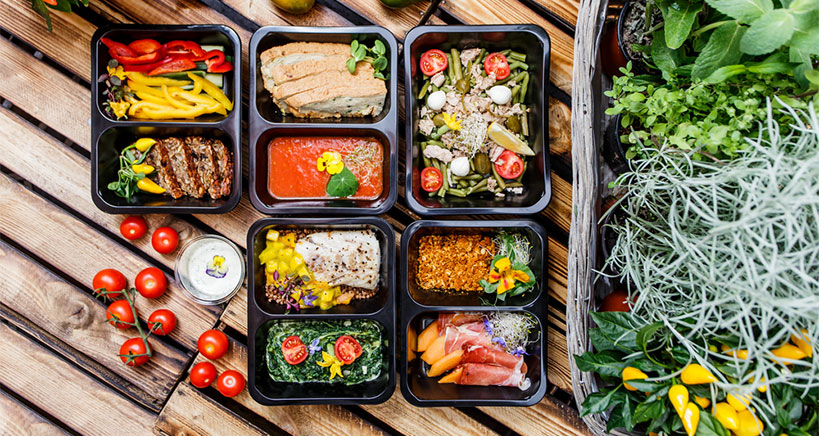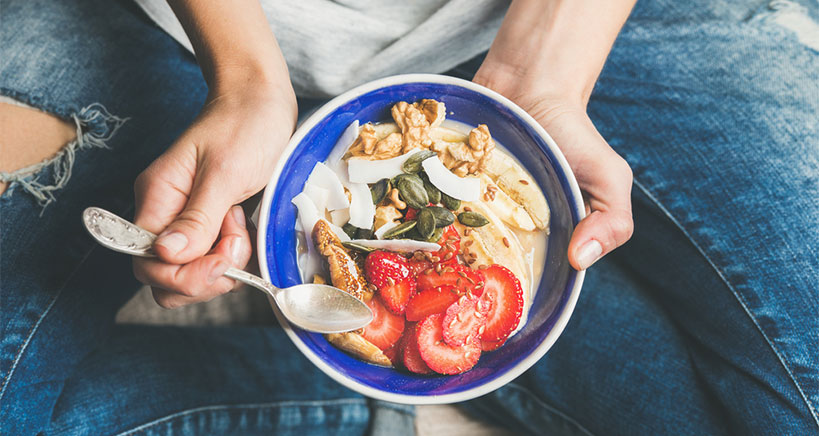
Clean Label a Food Industry Standard
Attention Foodservice Pros: Clean label is here to stay! If you thought it might be a passing phenomenon, fad, or trend in the food industry, it’s time to get with the times because clean label is no longer the exception but the expectation. Consumers are demanding that you provide them with transparency, authenticity, and sustainability – and they are willing to pay top dollar to restaurants, catering services, and manufacturers that respond to their demands. According to the clean-label strategy experts at Food Insider Journal and Vitafoods Insights, the latest stats in the nutrition space reveal that a whopping 73% of consumers are willing to pay more for foods and beverages made with ingredients they recognize and trust and that do not contain undesirable ingredients. (What constitutes ‘undesirable’? Hang onto your chef’s hats — that answer coming shortly…) Forty percent also said they would switch from their current brand to another if it offered more transparency.
2019 Consumers Want to Know
What does all this really mean? Put simply, it means that health-conscious consumers want to know what they are putting into their bodies. This accounts for the ever-expanding list of foods and beverages they deem acceptable – and what’s on the menu these days are ingredients that are dairy-free, gluten-free, fat-free, preservative-free, sugar-free, nut-free, alcohol-free, non-GMO, organic, all natural, and minimally processed. They also have a preference for vegetarian, keto, and paleo-friendly diets, plant-based sources of protein, authentic foods, ‘kitchen-cupboard’ ingredients, and ingredient sourcing. Translation: Consumers want to know where their food comes from!
What 2019 Diners Care About
According to Ken Donaven, market research professional at the Martec Group, the age of the Internet has fueled consumers’ thirst for information, providing them with tools to become researchers in their own right. The results are a greater scrutiny of ingredients, a heightened awareness of the potential harmful effects of additives, preservatives, unhealthy fats, and other supposed culinary ‘demons,’ as well as a growing concern for the environment. 2019 consumers care about natural resource shortages and food wastage and are calling upon food professionals to step up to the plate and step up their sustainability efforts. And when it comes to the market, world sales of clean-label products hit $165 billion in 2015 and are projected to reach $180 billion by 2020.

Restaurant Owners and Clean Label
So where do you fit into this picture? Whether you are a restaurant owner, caterer, baker, chef, bar owner, or coffee shop manager, the biggest takeaway is the paradigm shift required in how you process, create, and deliver your wares to your customers. To help satisfy their clean-label cravings, here is what Donaven advises: “Consumers are looking for food products that contain simple, easy to identify ingredients that they know and can easily pronounce. In addition, consumers are looking for products with a limited number of ingredients.” Giving us more insight is Mona Schmitz-Hübsch, senior marketing manager for Wholesome, Nutrition and Sweetness EMEA at Ingredion : “The emphasis has shifted from what has been removed to what is going into products. Consumers find it increasingly important to recognize the ingredients used in their food and drink. This shift in attitude may seem subtle, but it is important and is one that manufacturers need to consider. ”
Good News for Foodservice Pros
If all this seems daunting to you and your restaurant biz, clear your plate for some good news because the clean label movement may be the perfect opportunity for you to connect and resonate with your customers and cater to your largest eating-out demographic. Moreover, you can add icing to the cake if you also partner or ‘co-brand’ with your ingredient suppliers. Richard Clarke, Director of Ingredient Communications, explains that co-branding can develop consumer trust and provide a clear signpost for differentiation, which can then be converted into greater loyalty, higher spends, and repeat purchases.
Clean Label – What’s a Go and What’s a No?
Given that 91% of U.S. consumers believe that foods and drinks with recognizable ingredients are healthier, here are some of the label factors driving their choices:

- Recognition of ingredients by name
- Fewer ingredients with unidentifiable, long, or difficult-to-pronounce names
- Removal of artificial flavors and colors
- Removal of additives, preservatives, and synthetics
- Nutritional information provided on package
- Removal of ingredients perceived to serve no nutritional benefit or functional purpose
Clean Label Regulations
If you do the math, the whole equation sounds pretty simple – easy as pie, in fact. Added business value for your restaurant through the subtraction of additives. Yet while deceptively straightforward on the surface, what has become the de facto standard is actually anything but clear-cut. For when it comes to clean label official guidelines or regulations – there are none. Rather than being based on solid scientific evidence or industry controls, concepts of transparency and authenticity are based on consumer perception, individual company interpretation, and retailer positioning.
If warning bells are going off in your gut, listen to your stomach’s rumblings and keep reading. It’s time to reach for the spatulas and look at the flip side of the clean label movement…
Misleading Food Label Redesigns
While the scream-for-clean has been driving product innovation, a good thing in theory, some of the label redesigns are not entirely accurate and even worse are misleading. As Christina Bechtold, CEO of Prime Label Consultants Inc. explains, most foods in the US are already ‘clean’ and replacing demonized sugar, for example, with healthier-sounding natural alternatives like evaporated cane is simply redundant since it is, in fact, sucrose by another name. Likewise, using honey or agave as high fructose corn syrup (HFCS) replacements offers little if any nutritional bonuses. The commonly used HFCS 42 is comprised of 42% fructose and 58% glucose. Its honey counterpart is comprised of 49% fructose and 51% glucose, while the fructose content in agave syrups can range from 60-97%, posing a health risk for customers with fructose intolerance.
Similarly, just as clean label products do not always measure up, so too the sustainability of organic ingredients is not always consistent. For example, sodium benzoate and potassium sorbate are preservatives used to inhibit mold in beverages and high-moisture baked foods. While these chemical additives have passed the rigors of food tests, their modern-day botanical replacements, i.e. cultures made from seeds, whey, or rice, vary by batch and may require added refrigeration. And what’s more, their clean label version would require research by developers in regard to shelf life, storage, quality, and sensitive handling.

Clean Label Costs
While companies must be equipped to carry the financial load of sometimes more expensive replacement ingredients, the price of clean label extends beyond the monetary to disruptions in the supply chain, including longer lead times and availability delays that can have significant bottom-line percussions. Moreover, catering to the whims of consumers’ changing wish list can cost developers, suppliers, and foodservice providers a pretty penny in legal costs if they are not careful.
Clean Label Legal Issues
In an interview with Food Business News, David L. TerMolen, partner and member of the food industry team at the Chicago law firm Freeborn & Peters L.L.P., described the hot water Nutella found themselves in when their advertising claims did not properly reflect their product: “The riskiest claims are those that imply a product is healthy or wholesome. Nutella was the target of a class-action lawsuit because the product was touted as being made with wholesome and simple ingredients ‘like hazelnut, skim milk and a hint of cocoa’ and ‘an example of a tasty yet balanced breakfast.’ The lawsuit complained this was misleading because it implied that Nutella was healthy and wholesome even though the product contains 10.9 grams of added sugar and 2 grams of saturated fat per serving.
And while some food and beverage marketers have begun to use descriptors on product packages and websites such as ‘earth friendly,’ ‘artisan’, ‘pure,’ and ‘natural,’ they should be aware that clean labels are being increasingly scrutinized and that inaccuracies carry considerable legal risks. TerMolen’s advice? Be careful not to use broad statements in questionable contexts because class-action attorneys can argue a much narrower meaning in the courtroom.
Summary
Having said all that, it is clear that calls for transparency are driving the food and beverage market and as foodservice pros, this is one trend you don’t want to miss out on! So be sure to up the healthy ingredient content of your familiar recipes and dishes and update your 2019 menus to cater to your clean-label-loving customers but do so in good taste.
Thank you for sharing this post about Clean Label Do’s and Don’ts. Really helpful.